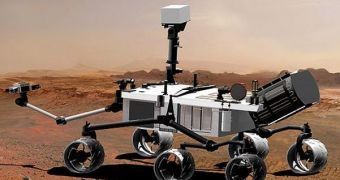Now that the technology to explore other worlds and return with samples has been finally developed, a lot of experts are turning their heads to a number of other issues that may affect future sample-return missions to Mars, or near-Earth Objects (NEO). One of the main challenges is finding the appropriate facilities in which to crack open the containers delivered back to Earth by various space probes. Some say that existing science laboratories, in spite of their elaborate security protocols, are ill-equipped to handle the task, and that new, specially designed facilities should be constructed, Space reports.
Two goals should be kept in mind at all times, scientists argue – Martian samples, for example, must not be contaminated by the Earth's atmosphere and biosphere, while the same samples must be unable to contaminate our planet as well. This is vital for the accuracy of the scientific results that will be gathered, but also for our own species' safety. There is no telling what “passengers” a Martian rock may carry, and how that life form may interact with creatures living here. The best bet is to keep the two systems isolated from each other, experts believe.
“We could build a facility today that would meet relevant standards for biocontainment (to protect the environment) and we could build a facility today that would meet scientific needs for contamination control (to protect the samples). Our technological challenges arise from the need to do both at the same time!” NASA Mars Exploration Program scientist Deborah Bass says. The idea of sample-return missions was first pondered at the American space agency in the late 1990s. Lack of funding killed off the project, but NASA continued to investigate the type of sample-return facilities (SRF) needed.
Bass worked closely together with NASA's Planetary Protection Manager, Karen Buxbaum, on the new investigation, which looked at three architectural plans, drawn by separate companies. All were asked to come up with ideas on how robots and humans could work together to handle the samples. “We know more about remarkable abilities of terrestrial microbes to survive (sometimes thrive) in challenging environmental conditions. Many more regulations and safeguards are now in place that must be observed to ensure a successful sample return program,” the two experts believe.
Bringing back Martian soil samples may not be that far away. The Russian space agency RosCosmos is already considering such a mission to one of Mars' moons, and NASA is scheduled to launch its new rover, the Mars Science Laboratory (MSL) in 2018. The MSL will have the ability to return samples to the Earth, NASA announces.

 14 DAY TRIAL //
14 DAY TRIAL //